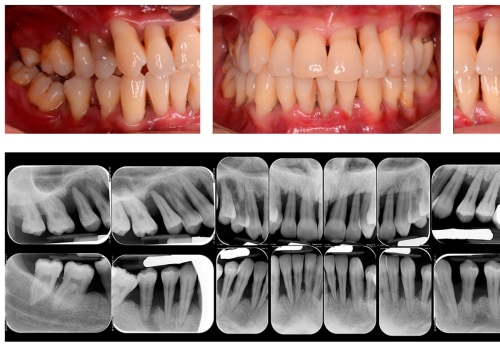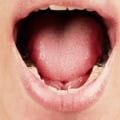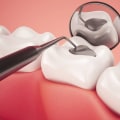Tooth decay is a common dental condition that can cause pain, discoloration of teeth, and even tooth loss if left untreated. Diagnosing tooth decay early is key to preventing further damage, and understanding the process of diagnosis is important for anyone looking to protect their oral health. In this article, we'll provide an overview of how tooth decay is diagnosed and discuss the different methods that dentists use to detect it. At its core, diagnosing tooth decay involves identifying the presence of plaque and cavities.
Plaque is made up of bacteria, food particles, and saliva that accumulate on the surface of teeth over time. When left untreated, plaque can harden into tartar, which traps bacteria and food particles near the gum line. Cavities are small holes in the enamel caused by the acid produced by plaque-producing bacteria. Dentists use a variety of tools to diagnose tooth decay, such as x-rays, visual examinations, and other tests.
X-rays allow dentists to see below the surface of teeth and spot any abnormalities that may indicate the presence of decay. Visual examinations involve looking at the teeth with a dental mirror and probe to check for signs of cavities or other problems. Other tests may be used to measure acidity levels in the mouth or to test for sensitivity in certain areas. By understanding the process of diagnosing tooth decay, you can work with your dentist to ensure that any issues are identified and treated quickly.
In this article, we'll provide an overview of how tooth decay is diagnosed and discuss the different methods that dentists use to detect it.
The first step in diagnosing tooth decay
is for your dentist to do a visual examination of your teeth and gums. They may also take an x-ray to get a better view of any potential decay. Depending on the severity of the decay, they may also take a dental sample to test for bacteria or fungi. The next step is to determine the cause of the decay, which can range from poor dental hygiene to certain medications or medical conditions.Once the cause has been determined, your dentist will discuss treatment options with you. If the decay is minor, they may recommend a filling or crown. If the decay is more severe, they may suggest a root canal or even extraction in some cases. In addition to traditional treatments, there are also a number of alternative treatments that may be recommended by your dentist.
These include oil pulling, laser therapy, and fluoride treatments. Each of these treatments can help reduce the risk of further damage and promote healthy teeth and gums. It's important to note that tooth decay can be prevented with good oral hygiene habits and regular dental checkups. Brushing twice a day with an ADA-approved fluoride toothpaste, flossing daily, and using mouthwash are all important steps in maintaining good oral health.
Additionally, seeing your dentist every six months for a cleaning and checkup can help identify any potential problems before they become too severe. Finally, it's important to remember that diagnosing tooth decay can be difficult, so it's best to consult with your dentist if you have any concerns about your teeth or gums. Taking the time to recognize any symptoms early can help you get the proper treatment and prevent further damage.
Preventing Tooth Decay
The best way to prevent tooth decay is to practice good oral hygiene habits such as brushing twice a day with an ADA-approved fluoride toothpaste, flossing daily, and using mouthwash. Additionally, seeing your dentist every six months for a cleaning and checkup can help identify any potential problems before they become too severe.Tests for Diagnosing Tooth Decay
Diagnosing tooth decay is an important step in determining the best course of treatment.The most common tests used for this purpose are visual exams, x-rays, and dental samples. Visual exams involve your dentist looking closely at your teeth, gums, and mouth to identify any signs of decay. X-rays can be used to detect deeper decay that may not be visible to the naked eye. Dental samples involve taking a small piece of enamel from your tooth to examine under a microscope.
Depending on the severity of your tooth decay, your dentist may recommend additional tests to determine the extent of the damage.
Treatments for Tooth Decay
Treatment options for tooth decay vary depending on the severity of the decay. Common treatments include fillings, crowns, root canals, extractions, oil pulling, laser therapy, and fluoride treatments. Fillings are used to repair small cavities, while crowns are used to restore teeth that have been severely damaged by decay. Root canals may be necessary for teeth that have been infected by decay, as the root of the tooth must be removed.Extractions are used when a tooth has been so severely damaged that it cannot be saved. Oil pulling is a traditional practice that involves swishing oil in the mouth to remove bacteria and reduce inflammation. Laser therapy is a newer type of treatment that uses light energy to target areas affected by decay. Fluoride treatments are used to strengthen weakened tooth enamel and prevent further decay.
Signs & Symptoms of Tooth Decay
Tooth decay is a common dental issue that affects millions of people around the world.It is important to be aware of the signs and symptoms of tooth decay in order to get proper treatment and prevent further damage. Common signs and symptoms of tooth decay include sensitivity to hot or cold foods and drinks, discoloration of the teeth, pain when chewing, visible pits or holes in the teeth, and bad breath. Sensitivity to hot or cold foods and drinks is one of the earliest signs of tooth decay. This sensitivity may be a sign that there is a cavity in the tooth, as decaying enamel can no longer properly protect the dentin layer beneath it. Discoloration of the teeth can also indicate tooth decay.
This is caused by bacteria eating away at the enamel on the tooth, which leaves a yellow or brown stain. Another symptom of tooth decay is pain when chewing. This pain is usually localized to a specific area of the mouth and can be sharp or dull. It is caused by a cavity in the tooth, which can become inflamed when exposed to pressure from chewing. Visible pits or holes in the teeth are also a sign that tooth decay has occurred. These pits or holes are caused by bacteria eating away at the enamel on the tooth, resulting in an uneven surface.
Bad breath can also indicate that tooth decay is present, as bacteria in decaying teeth can cause an unpleasant odor. Tooth decay is a common dental issue that can have serious consequences if left untreated. Fortunately, it can be prevented through good oral hygiene and regular dental visits. Signs and symptoms of tooth decay include discoloration, pain, bad breath, and sensitivity. Diagnosing tooth decay involves a variety of tests such as x-rays, dental exams, and visual inspections.
Treatment options vary depending on the severity of the decay and may include fillings, root canals, crowns, and extractions. Prevention is key to avoiding tooth decay and can be accomplished with regular brushing, flossing, mouthwash, and scheduling regular checkups with your dentist. No matter what your oral health condition is, it's important to take good care of your teeth and visit your dentist for regular checkups. Early detection and treatment of tooth decay can help prevent further damage and ensure that your teeth remain healthy for years to come.






